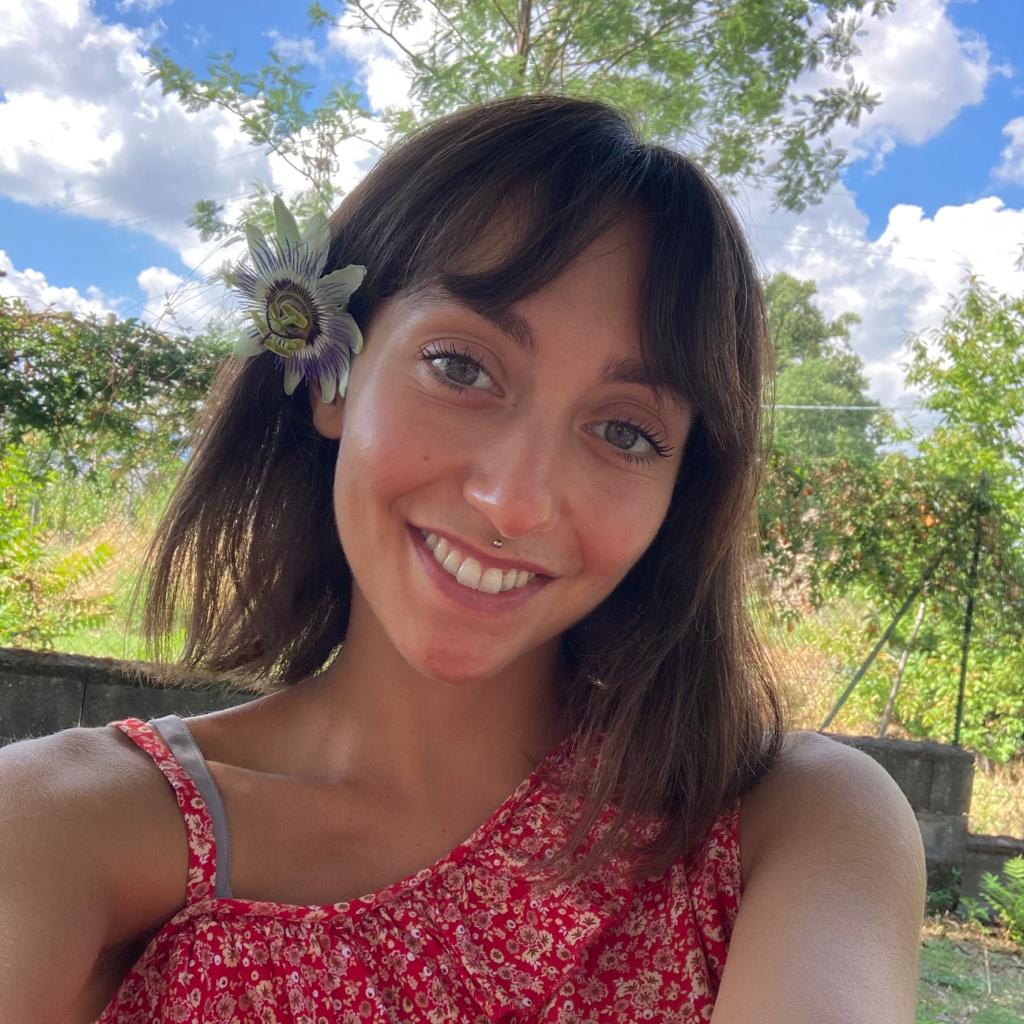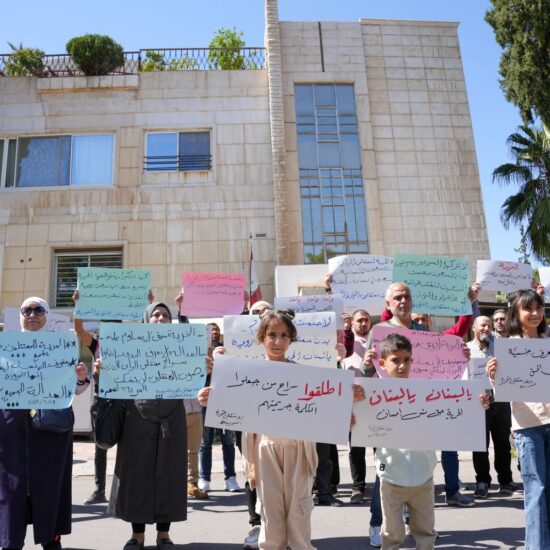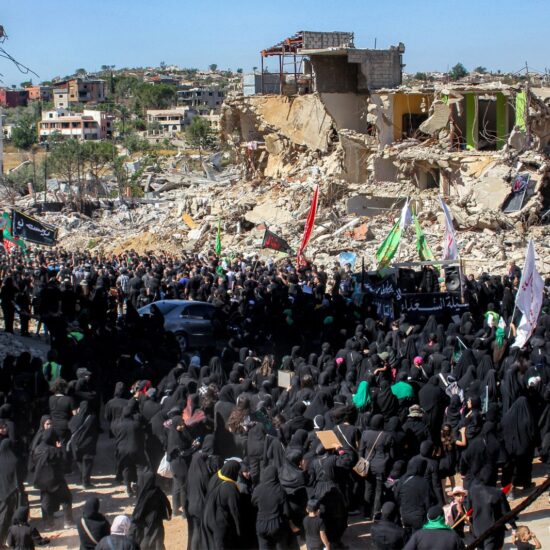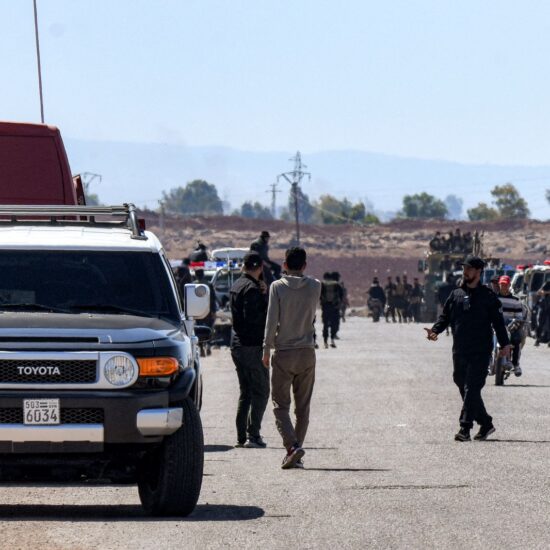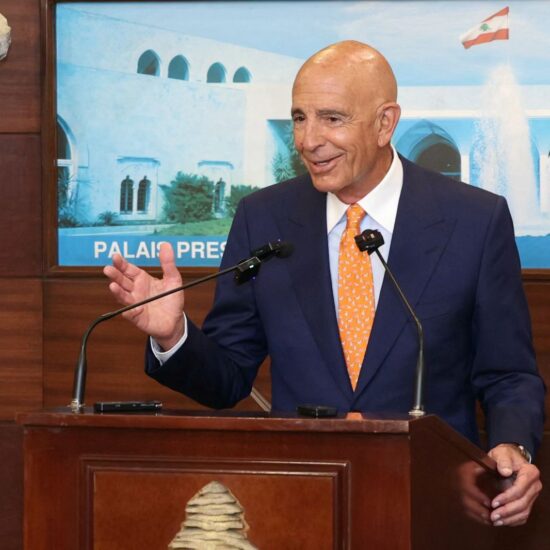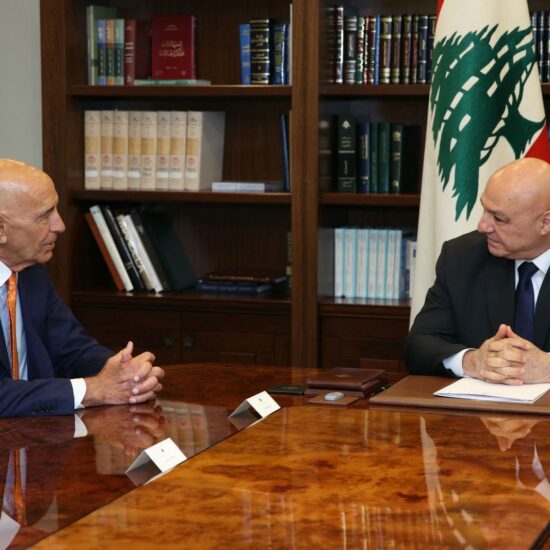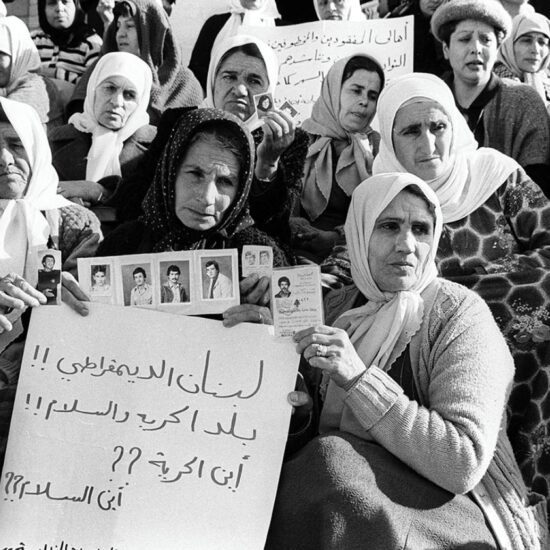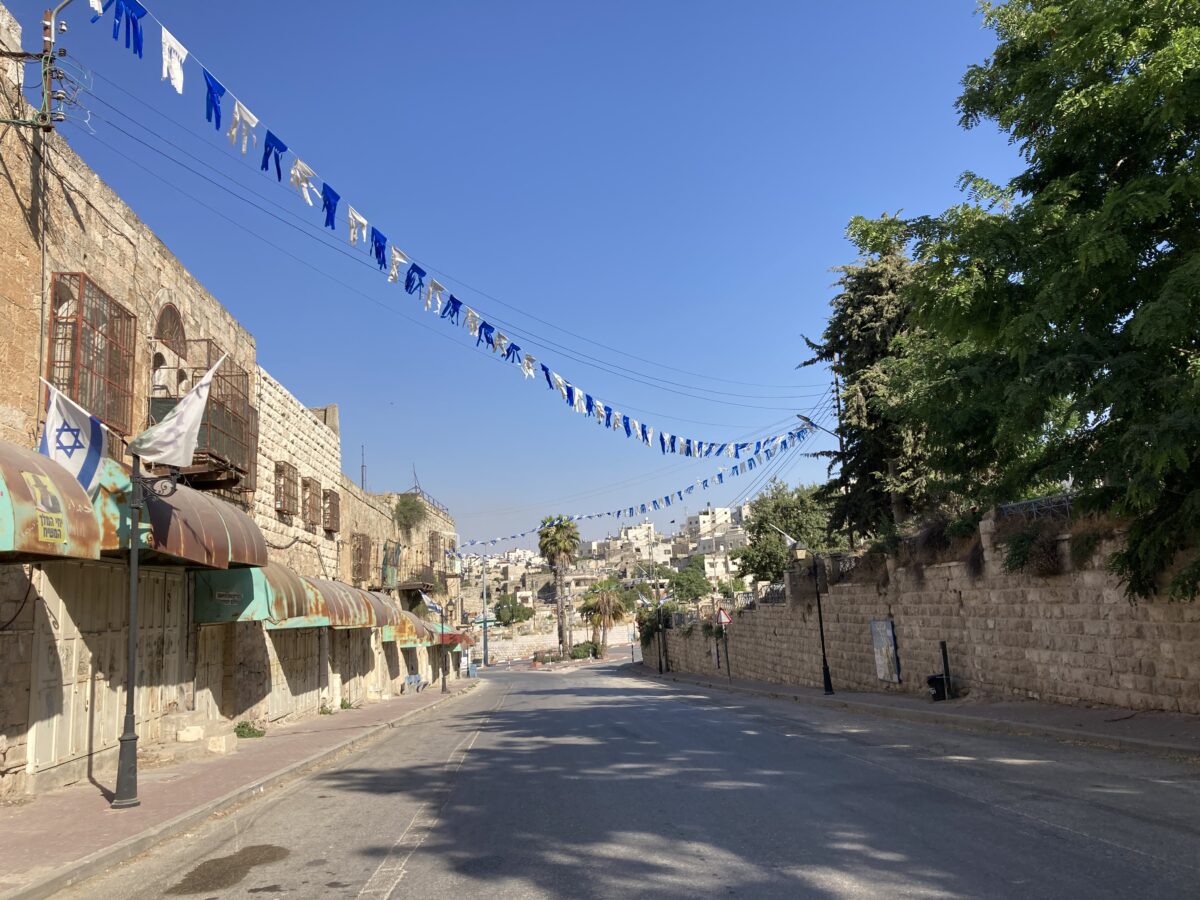
On settlers’ violence, Israeli policies of separation, and the future of nonviolent resistance. The occupied city of Hebron, in Arabic Al-Khalil, offers a lens of understanding of how insecurity and fear are rapidly spreading for Palestinians in the West Bank after October 7
When asked the question ‘how are you,’ which I thought could shorten the distance of a phone call – or the unpronounceable one between freedom and occupation, privilege and injustice, in short between the world and Palestine – Muhanned stiffened. “Okay,” he replied quickly, “you?” I had to wait to ask him about the Second Intifada, what has changed in Hebron since then, to receive a complete answer to that clumsy and first-time attempt to break the ice.
“We are all so scared. When I see what is happening today, I feel we are going back to 2000. I was 8 years old during the Second Intifada. These days I feel I’m having the same rough time, the same anxiety of back then. We’re daily facing a lot of shootings, a lot of killings, a lot of violations, a lot of army raids at night. Personally, it brings back so many bad memories.”
Muhanned Qafesha is a journalist, a sports commentator and a human right activist. He was born and grew up in Hebron, Al-Khalil in Arabic, during the major Palestinian uprising against the Israeli occupation known as the Second Intifada – one of the toughest times for the country. “I see myself as a strong person,” he said, ending the sentence with a doubting tone that preludes an objection. “But the past weeks have created a fear inside of me that I’ve never had before, except for when I was a child.”
What he remembers the most about the early 2000s, the time of the Palestinian insurrection blown-up by the fuse of Camp David’s failure, was not being able to sleep because of the noise of Israeli shootings across the city. The same old rule of retaliation. “If it wasn’t that, it was the fear that next time it would have been you.”
More than four years of fighting across the occupied Palestinian territories of Gaza, East Jerusalem, and the West Bank, at the time, caused about 1,010 victims in Israel and 3,350 among Palestinians, according to the data collected by the Israeli human rights organization B’Tselem. The scary number of last month’s massacres in Gaza must be enough to realize the gravity of the current circumstances.
“From the moment they started striking over Gaza, it felt like there could be a regional war: again, that we could be the next ones. If the West Bank tomorrow rises and if they start a large-scale invasion here, it’s going to be exactly what I lived when I was a kid” he said, once we had embarked in a conversation with no room for questions on hope.
Looking closely at what’s happening, Muhanned’s fears don’t seem so abstract. Night raids, soldiers invading Palestinian homes, children beaten up in the streets, arbitrary arrests, deadly shootings. Though, this is not a new story for the Palestinian inhabitants of Al-Khalil.
Dissecting Palestine: the Hebron Protocol
Located in the south-west of the Occupied West Bank, Hebron, in Arabic Al-Khalil, is the second largest city in the West Bank after East Jerusalem, and the only Palestinian city with an Israeli settlement in its heart. It is believed to be the burial site of Abraham, the common father of Jews, Muslims, and Christians. Its vibrant historical, cultural potential has been severely impacted by the Israeli military occupation of the West Bank, ongoing since 1967.
In 1968, just one year after al-Naksa – the great defeat of the Six-Days War which brought Israel to occupy the Golan Heights, the Gaza Strip, East Jerusalem, and the West Bank – a group of Israeli citizens rented a hotel room in the heart of the city for 48 hours, before declaring they did not intend to leave.
Since then, the story of Hebron has been one of impossible words, enforced helplessness, and frustrating silences. A ghost town, emptied by decades of senseless violence, unfair evictions, unacknowledged deaths, family separations, walls built with the remains of rubble, painted with the wounded blood.
A clear attempt to manipulate its history on the ground – without directly touching it – is evident on Shuhada Street. Once the main market road, it is now forbidden to Palestinians to walk. Today, there, only Israeli flags are waving. Among the consequences of the policy of separation and the military presence, the unpunished violence of the settlers; checkpoints and identification number to render Palestinians’ lives a paradox for what they call security; curfews and interdictions to walk in the old city – there is, also, a policy of names-changing and apartheid signs that are trying to erase the Palestinian soul of Al-Khalil – and which are written only in Hebrew and English. “These buildings were constructed on land purchased by the Hebron Jewish community in 1807. This land was stolen by Arabs following the murder of 67 Jews in 1929. We demand justice. Return our property to us.” Or: “This is Jewish Property purchased in 1817. We have the Deed!,” “Liberation, return, rebuilding. 1967: liberation of Hebron and reestablishment of its Jewish community. The children have returned to their own border.” “Warning! Palestinian snipers.”, “Palestine never existed (and never will!),” local sources reported.
In 1970, the Knesset approved the establishment of Kiryat Arba settlement, the first illegal settlement close to the area of Hebron, where the current Minister of Israeli National Security, Itamar Ben-Gvir, lives. Nine years later, in 1979, settlers from Kiryat Arba took over Daboya Building in Shuhada Street – turning it into the settlement of Bait Hadasa: it was the first outpost in the middle of a major Palestinian town, that soldiers took up position to defend.
In the ensuing decade, more settlers moved from Kiryat Arba into the core of the old city, establishing the settlement points of Beit Romano, Tel Rumeida, and Avraham Avinu, with the government’s tacit blessing as well as the army’s protection. A fifth settlement within the city, called Beit Ha-Shalom by the settlers, was started in 2014 with the approval of the Israeli Defense Minister after the Israeli Supreme Court ruled that the settlers’ use of a front man to purchase the four-story building from its Palestinian owners was legal. The five settlements which dominate the old city are connected to each other through Shuhada Street, leading to the settlement of Kiryat Arba. A map of Hebron’s city center realized in 2019 by B’Tselem, the Israeli Information Center for Human Rights in the Occupied Territories, can give a vague idea of the fragmented fabric of a city: though, it requires some imaginative effort to imagine how to move within it, considered the maze of checkpoints and the arbitrary prohibition for Palestinians to pass through some streets, either on foot or by car.
“It is not about security. All those checkpoints are there to frustrate us. At the airport you get checked, then they let you in, right? You have your flight, they let you go. Here, I get checked, and still I am not allowed to walk on most parts of H2. Why?” Muhanned asked. “Because that’s what the settlers want. It is not the army to control here, but the settlers: they give orders to soldiers,” he added: and following October 7, as part of the wartime push engaged by the Israeli authorities, they have been armed with thousands of assault rifles.
Viewed from a bird’s eye perspective, it is hard to tell how massive the presence of the settlements is – because they grow vertically. The impression is that of a city built on another, which crushes it with its control towers, its signs of hatred, the stones, the urine, the acid thrown on the passers-by – closed in grids, then evacuated elsewhere – for so-called ‘safety reasons’, while soldiers armed with shotguns and sniper rifles escort the settlers to defend them from children armed with pebbles.
Families who dare to resist barricade themselves at home – they create fences, and when the army bars the doors, corridors open into the neighbors’ houses – trying to build community solidarity in this city pushed underground, while another Hebron looms over its miserable roofs.
The reason Hebron’s center is so coveted by Israeli settlers is historical and religious. There, in fact, stands the holy site of the Tomb of the Patriarchs, inside the Ibrahimi Mosque, built upon a cave where Abraham and Sarah, Isaac, and Rebecca, as well as Jacob and Leah are believed to be buried: now marked by the decades-long evidence of the occupation. A road blocked by metal bars and checkpoints hides the view of the minaret from the road leading to the square. Inside the mosque, the rectangular prayer hall with huge columns, wooden ornaments and calligraphies, mosaics decorating the qibla wall, where the mihrab designates the direction of Mecca. Half of the mosque, in the mid-1990s, was turned into a synagogue: believers of different faiths came for centuries to the same place to worship their God, but political disorders and existential clashes between the two people – the Israeli Jews and the Palestinian Muslims – transformed this holy shrine into a symbol of war.
In 1929, following tensions and violence around authority at the Jerusalem Western Wall, Hebron was stained by the blood of its first massacre: 67 Jews and 21 Muslims died, killed by Palestinians. In the same place, 65 years later, during the month of Ramadan, the Israeli settler Baruch Goldstein killed 29 Muslim worshippers and injured more than 100. An apparent revenge which caused terribly unjust consequences. Indeed, if the 1929 massacre is fueling the narrative of the settlers’ movement – so they say the Jews were killed there, and as Jews, they are entitled to return and avenge – that of 1994 affected the everyday life of Palestinians who back then lived, and today seek to survive, in their own land. A war of narrative, on one side; an unbalanced struggle for survival, on the other.
Baruch Goldstain’s massacre started the policy of separation that led to what is known as The Hebron Protocol. With the pretext of protecting 800 settlers who live in the heart of the city, as well as the almost 8000 ones in the nearby Kiryat Arba, after turning half of the Ibrahimi Mosque into a synagogue, preventing five of the original seven access points to Muslims and building checkpoints over checkpoints to search and question Palestinian residents, the Israeli government adopted a separation policy that gradually expanded throughout the city center, eventually turning Al-Khalil into a ghost town. In what used to be one of the most flourishing markets of Palestine, 1800 shops have been closed for a security purpose that is only enhancing the settlements’ project.
Since 1997, the whole city has been split in two, 80% under Palestinian control – the so-called H1 area, comprising around 115,000 residents – and the remaining 20%, called H2, under Israeli military control. Here, 36,000 Palestinians live in contact with 800 settlers, whose proximity creates daily violence. The H2 area includes not only all Israeli settlement points in the city and the city’s eastern suburbs, but also the historic center of the Old City, its commercial center and the north-south traffic artery, with a massive presence of soldiers that makes everyday living for Palestinians extremely hard, humiliating, and increasingly dangerous.
Worse than ever before
“Where are you?” I asked Muhanned. “I’m home, where else should I be? You don’t really go out at night, it is too dangerous. The Israeli army raids the city every night.”
He lives in the H1 area, under the control of the Palestinian Authority. In theory assimilable to what Oslo Accords defined as area A, in the other parts of the occupied West Bank: de facto turned into a further enclave for the accomplishment of the Zionist policy of settler colonialism, like the areas B and C. On days like these, though, where deadly tensions are frequent and the main struggle is to reach the end of the day with your family being safe, it doesn’t really make a difference. The borders of people’s lives are confined to the walls of their homes: not even to those imposed by the Israelis. Hebron, according to the voices of veteran Israeli soldiers, is a microcosm of the military control mechanism in the entire West Bank: “the lesson we learn from this city, we may and should implement on the whole mechanism”, they reported in one of their publications.
Indeed, to understand the capillarity of the Israeli policies on the occupied territories, one must look at Al-Khalil: and to look at it on the aftermath of October 7, to have an idea of the enforcement measures taken by Israel as part of its wartime push, as well as the total impunity of the occupying power’s aggressions.
On the morning of Monday, November 13, a Palestinian taxi-driver, Hajj Issa Al-Qadi, was killed, right before starting his working day. “It was 7am, just next to my home. He was 66 years old,” Muhanned said. I’m embarrassed to ask him further: about the olive harvest, the school for children, or even about politics. I don’t even know if it’s appropriate to use the word ‘life’: but I try.
“Everyone is scared of just going out, especially families who have sons and daughters,” said Muhanned, commenting on a typical day in the city’s H1 area during the past month and a half.
“If we talk about life in general, in Hebron, it’s not a normal life anymore. Following the situation in Gaza, witnessing the killing of thousands and thousands of Palestinians, is making people feel depressed, angry at the same time, and also hopeless. The movement of the people inside the city is very little, it’s either they go to work or they stay at home. People don’t move a lot. They’re not shopping, going out, nothing.” Moreover, looking at the situation in the West Bank, that some analysts defined as ‘Gaza-ification’, and considering that Hebron is the biggest Palestinian city in the Occupied Territories after East Jerusalem, everybody fears they would be the next ones, including Muhanned. “We see the video of the Israeli army, beating up and humiliating the prisoners or the detainees, forcing them to sing the Israeli national anthem or repeat pro-Zionist slogans. We’re so scared. We don’t have the desire to do anything anymore.”
One of them, whose story Muhanned has recently shared on his Instagram, is Iyad Banat, from Hebron city. In the video live streaming his arrest, you could hear his children and wife crying and begging the soldiers to stop beating him. However, the soldier yells and points his rifle at them. “The soldiers’ behaviour with Iyad is a phenomenon in the West Bank,” Muhanned wrote.
Under harsh lockdown
It is evident that, for the 36,000 Palestinians who live in the H2 area, fear is higher. There, in fact, their limited space is not just surrounded, but invaded by settlements from within: despite the settlers residing there being about 800, the presence of soldiers is massive.
In her movie Mission: Hebron[1] (2020), Israeli filmmaker Rona Segal asked six former Israeli soldiers to provide first-person accounts of their service in Hebron. “As a soldier, you’re the guard of the Jews who live in Hebron, that’s your only mission,” Yonatan Stearman, ex-first sergeant in the Israeli army, who spent six months in Hebron, claims in the movie.
Therefore, the same paradigm that applies to the entire Al-Khalil, finds in H2 its most eloquent evidence.
Following October 7, for Palestinians in H2 it was forbidden to leave their homes for four days, living off whatever supplies they already had. As of today, and ongoingly since then, they can only leave their homes and cross checkpoints at a designated hour in the morning and an hour in the evening for three days a week: on Sundays, Tuesdays and Thursdays, from 7:30 to 8 in the morning to leave, and from 6 to 7 in the evening to go back. “And if you miss the time, you’re simply out,” Muhanned explained.
“During all other days of the week, they can’t leave their home. Friday and Saturday, you can’t even open your door, window, nor go on the rooftop,” he continued. Residents of houses neighboring settlements are living in constant fear, targeted by settlers’ violence. Also, the occupation is taking advantage of the situation to build new outposts. “Nothing new, they’ve always done it,” according to Muhanned.
It’s hard to imagine how things could go worse than this. But now, somehow, it is happening.
As settlers’ violence against Palestinian residents of H2 increases, ambulances are not easily allowed, when not completely forbidden to access. “You have to make six calls to bring an ambulance in. It is coordination. We call the Palestinian Red Crescent, then they call the Arabic speaker of the Red Cross, the Arabic speaker of the Red Cross calls the English speaker of the Red Cross, the English speaker of the Red Cross calls the the Israeli civil administration, who calls the commander of the army in Hebron, who calls the soldier who is standing on the main checkpoint.”
Let alone that the ambulance should make an absurd way around the mountain surrounding the city, passing through Kiryat Arba: a way that, if there was no checkpoint, would take at least 20 minutes. Which sometimes could be too much.
The future of nonviolent resistance
With settlements all over the West Bank, connecting and bypassing roads for settlements and complicated checkpoint systems, Israel has divided the Palestinian territory into small, disconnected islands in a land fully controlled by the military.
One of the most recent settlements illegally built in Al-Khalil – one should rather say above Al-Khalil – overhangs the Sumud centre. Arabic for steadfastness, located inside H2 in the middle of Tel Rumeida neighborhood, Sumud is the heart of Youth Against Settlements’ activities – a nonviolent group formed in 2008 to put an end to illegal Israeli settlements through civil resistance and nonviolent popular struggle. Muhanned is one of its members.
“We’ve always been called terrorists, both by the settlers, the army and the right-wing movements in Israel,” he explained. “Although we believe in nonviolence.”
Its founder, Issa Amro, has been recognized by the European Union as a Human Rights Defender. Despite being a nonviolent resister, he was arrested and tortured on October 8 by settlers wearing army uniform. Cuffed and tightly blindfolded, he was released after 10 hours. Over the next few days, Amro said settlers in military uniform attacked his home, the Sumud center, stealing his house keys at one point. On October 20, soldiers forced Amro from his home, declaring it a “closed military zone”, insisting it was for his “protection”. Amro, who is now staying with friends in the H1 area, has not been able to return to his home and is still recovering from injuries to his back, legs and hands, as Al-Jazeera reported.
For a long time, settlers have been trying to take over Sumud center to be able to make a street connecting the settlement of Tel Rumeida to Shuhada Street. “Our small achievement to keep the house was a really big achievement for a lot of Palestinian families living around the area, because if Sumud house is taken, it means the next house is the neighboring house, and then the other, and so on,” Muhanned explained, talking about his involvement in Youth Against Settlements.
Part of their activism involved teaching local families to use a camera to film settler violence and ongoing attacks. “Sometimes, when there is a camera, the settlers’ and army’s attacks might get less violent. We used to see soldiers telling settlers: there’s a camera, or the commander telling the soldier: watch out, there’s a camera.”
Now, though, everything has changed. Even in front of cameras, the limits to the Israeli brutality on Palestinians have been largely overcome. A man was shot dead by a settler with a live ammunition bullet in the stomach, on October 13, in the south Hebron Hills, while cameras were recording everything.
“And it will only get worse.” According to Muhanned, “the Israelis are taking their revenge because for the first time they suffered from the consequences of the occupation. But people will pay the highest price.”
As Palestinians in the Occupied Territories, it is usually said, people live as if they were in a huge jail. Apparently, it is much more than this: because in jail, although without freedom, prisoners are at least ensured safety. “Here we don’t feel free and we don’t feel safe,” he said. “For the settlers and the army, now, we are even more than enemies. We are a target, because we have always spoken openly against the occupation.”
Muhanned has escaped death at least ten times. “Not to get killed, once in 2016, to a soldier that was pointing his M16 at me, I said, in Hebrew: I am a Jewish, not to get killed.” He says he’s lucky, because he speaks Hebrew, an ability that lets him follow the channels of Israeli propaganda, and allows him sometimes to laugh. “One must be very strong to laugh,” I admit.
“You know they pay influencers to state anything in support of Israel? We pay zero shekel on our side.”
The concept of luck, considering the circumstances, sounds like a paradox. But how many others, like Muhanned, were killed or arrested because they did not understand what soldiers were saying. “Soldiers come here after they’ve taught them five to ten words in Arabic: shut up, take your ID, take your shirt up, they can’t communicate,” he explained.
Now that the world’s media attention is on Gaza or inside Israel, more settlers are moving to the West Bank: armed and protected by the unjust law of impunity, their presence makes no place safe. “It is even more dangerous now because a settler who knows you, and hates you, is wearing an army uniform,” Muhanned explained.
The history of tomorrow
Apart from mere survival and ensuring safety to the community, one of the most challenging objectives for the Palestinians of Al-Khalil, and especially activists like Muhanned, is to raise children with the idea of nonviolent resistance.
“As I told you, it is not easy. It is too difficult to disconnect children from the environment surrounding them.”
At Youth Against Settlements, activists built a school offering children classes of drawing, dance, music and languages, doing their best to make them find their comfort zone at Sumud. But again, Muhanned repeated, it is not easy. “You work with them today, they feel good today, next morning they will see a soldier or a settler attacking someone. It’s coming back. It always does.”
Even before October 7, Muhanned explains, lots of children in Al-Khalil were used to seeing M16 in front of their eyes, people getting killed, soldiers attacking young Palestinians, and settlers invading their houses.
“All children in Palestine are traumatized, and those who live near the settlements are even more traumatized,” Muhanned said, with his thoughts at his nephews. “And it’s not easy to treat them from the trauma. Usually, it is one incident that happens, you treat it, and it doesn’t happen again. But here it is a continuous state of trauma.”
“Of course,” he added, “what happens in Al-Khalil and other parts of the West Bank is not even comparable to the genocide witnessed in Gaza every day. Though, all Palestinian children are watching the news from the Strip: and that’s also traumatizing, considering they are all disenchanted enough to realize it could happen to them.” Childhood, on that side of the border, seems to extend onto another dimension, a completely different system of reference.
Yet, until a couple of months ago, a different future perspective seemed possible even in Al-Khalil.
“Let’s say tomorrow Palestine is free,” Muhanned told me in a previous interview, roughly one year before the debate came back on the front page of the world’s news. “Every night, if you come to Hebron and sit here, after 11pm, you would hear a shooting. It does not stop until 5am in the morning. Shooting everywhere. And you don’t know if this is a fight, if it is a wedding, if it is someone shooting at another family, you don’t know.”
He was trying to explain to me the roots of the conscious and daily renewed choice of nonviolent resistance, the future of his hometown, his beloved people.
“I am not looking at settlers: I look at my community first. And I am not choosing nonviolence to talk with the occupiers, but because I don’t want a Palestinian community with violence within itself, I don’t want an idea of violence inside my family. If I speak in a violent way, these kids will grow up with the wish of having a M16 and shooting someone. This made me think in a different way.”
Today, however, the challenge is even more difficult: and thoughts turn to the past, to the extreme days of the Second Intifada, to the fear that today’s children are facing the gates of the same harsh childhood as those of yesterday.
“I started thinking how I will be able to protect my family, to protect myself, what the future of my nephews will look like,” Muhanned said, fearing a more brutal repetition of an unforgettable, bloody page of his people’s history, which has already been opened.
Todays and tomorrows for Palestine, it seems, will be days of a mutilated society; the cradle of a new, unblameable radicalism: which is the Israeli occupation’s long-term effect on the Palestinian environment.
[1] Available here: https://www.facebook.com/nytopinion/videos/3076333682621571/


